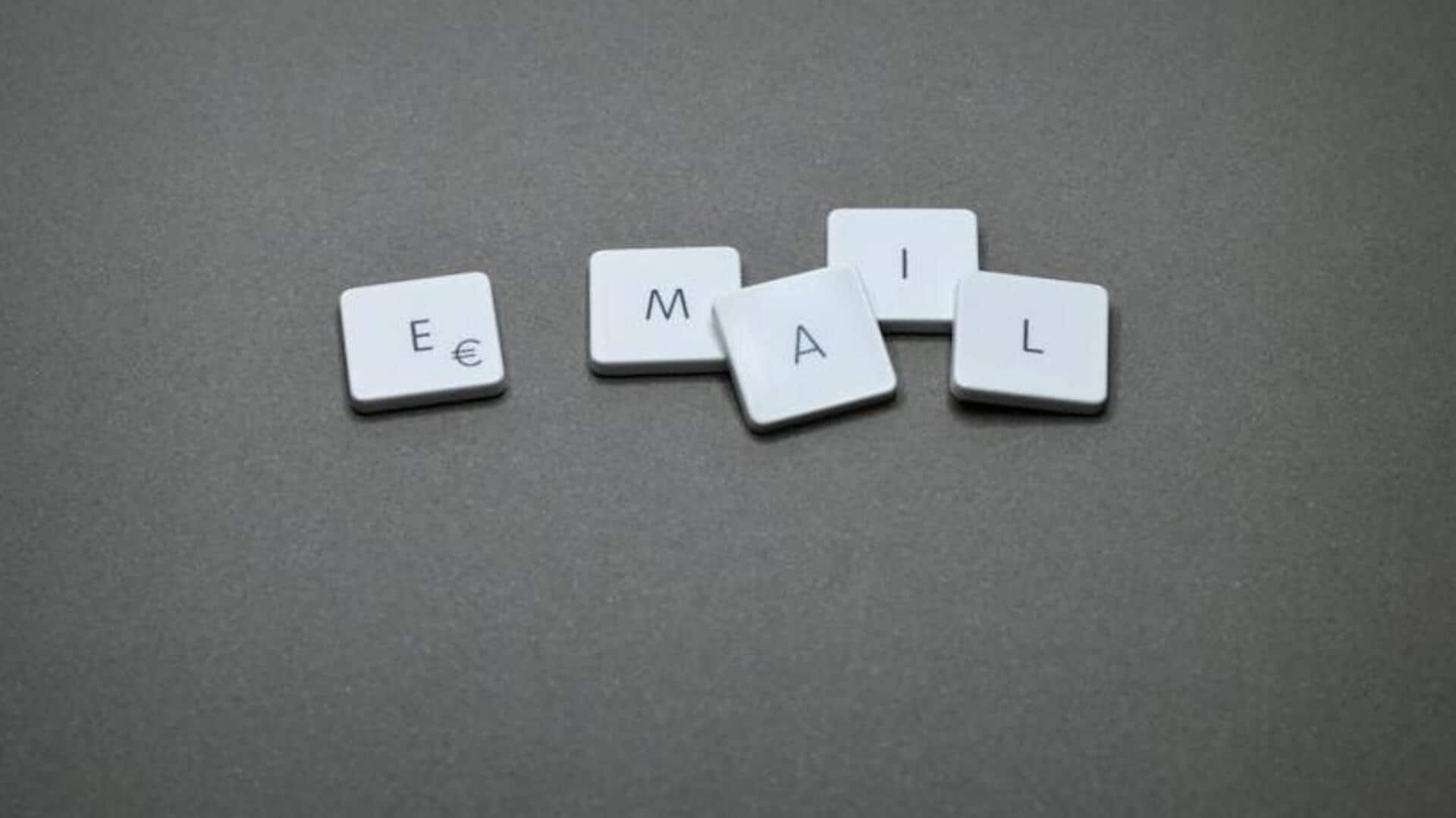
5 essential email etiquette tips you should know
What's the story
In today's digital age, email continues to be a primary means of communication for both personal as well as professional interactions. Knowing some basic rules of email etiquette is important to ensure the messages you send are clear, respectful, and effective. In this article, we will list five important tips that can improve your digital communication skills.
Subject clarity
Use clear subject lines
A clear subject line sets the tone for your email and helps recipients understand the purpose of your message at a glance. It should be concise yet descriptive enough to convey the main point or action required. Avoid vague phrases like "Hello" or "Important," as they do not provide specific information about the content of the email.
Brevity matters
Keep messages concise
Emails are best kept short and simple. Long-winded messages can confuse or bore out your recipient. Try to get your main ideas across in a few sentences, while giving necessary details without overwhelming information. If more explanation is required, think of attaching documents or scheduling a call.
Language tone
Use professional language
In professional settings, never forget to keep the tone of professionalism alive in your emails. How? Obviously, by avoiding slang or too casual expressions that might come off as unprofessional. Make sure your grammar and spelling are correct all over the email. The attention to detail shows respect for the recipient and emphasizes the seriousness of your communication. Keeping language professional ensures your message is conveyed without any misunderstandings.
Recipient awareness
Be mindful of recipients
Before hitting send, check who is going to receive your email. Make sure that only relevant people are a part of the conversation by using 'To,' 'Cc,' and 'Bcc' fields correctly. This not only prevents unnecessary clutter in others' inboxes but also respects their time by involving them only when necessary.
Timely replies
Respond promptly
Timeliness is key to ensure that you continue to communicate effectively over emails. Ideally, you should shoot for a response within 24 hours, if you can. This not only shows that you respect the recipient's time but also keeps the conversation flowing. Quick responses can avoid unwanted delays or misunderstandings resulting from prolonged silence from either side of the conversation.